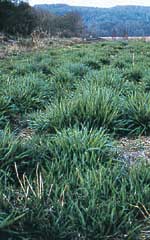Description
Virginia Wild Rye Seeds 8095 (Elymus virginicus). Native of Canada. Perennial.
150 seeds/gram
This cool season bunching type woodland grass is native to the entire southern half of Canada. Virginia Wild Rye makes an excellent forage grass and it is particularly suited to moist soils along streams, ponds, margins of wetlands and riparian areas and at the borders of woodlands. While it is partially shade tolerant, Virginia Wild Rye is equally at home in both woodlands and open grasslands. Its seed is browsed by many song and game birds while the foliage is browsed by deer. A short lived perennial that grows between 90-120 cm in height. Hardy to Zone 3. For many native and perennial plants, late fall is the best time to sow seed directly outside. Why you ask? Simply put, many of these plants produce seed that is viable but dormant. This means allowing seeds to naturally stratify over window will “wake up” the dormant seed for best results.
How to Grow
Many native grasses do best when planted in the fall, between Oct. 15th and Nov. 15th. A late fall sowing naturally stratifies any seed that may be dormant. Virginia Wild Rye can also be successfully sown in spring. Keep in mind that should ideal growing conditions not occur, the seed may go dormant and not germinate until the spring of the following year.
Many native plants will not bloom until the second year of growth when grown from seed. Avoid the use of supplemental fertilizer as this encourages weeds at the expense of the native plants. During the establishment year, native species plantings should be watered when dictated by the weather. The following year’s growth adapts easily to local climate and soil conditions needing only what nature provides. Mow to 20 cm height at least once through the first year of growth should aggressive weeds threaten to take over the planting and again after the fall frosts have reduced annual foliage. Consider a controlled burn of prairie species where municipal laws permit. The encroachment of woody or non-prairie vegetation is curtailed by fire allowing the prairie community to thrive.




